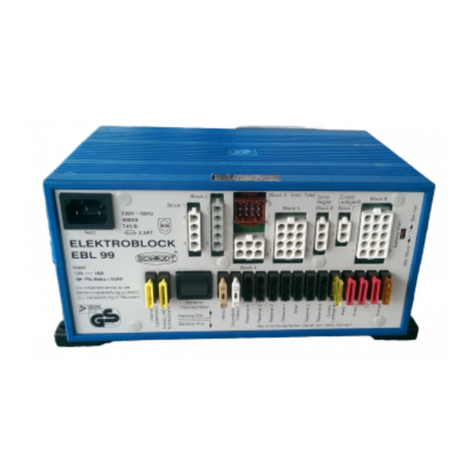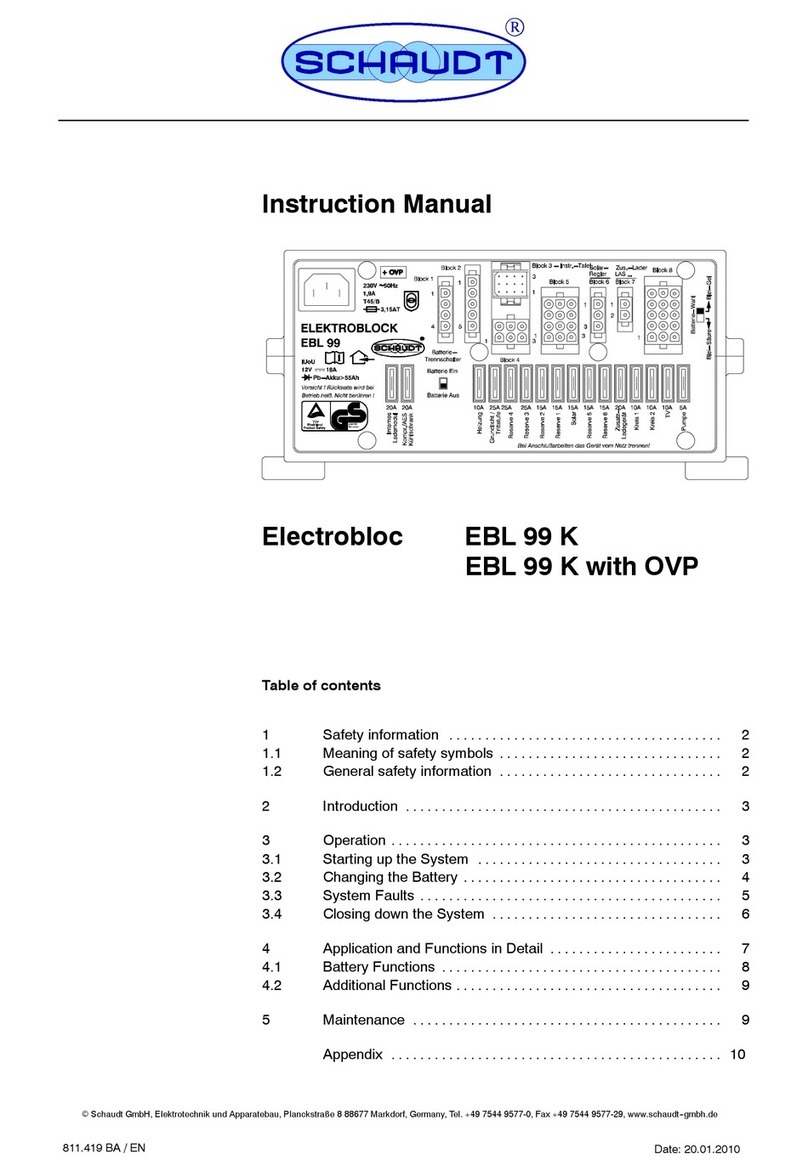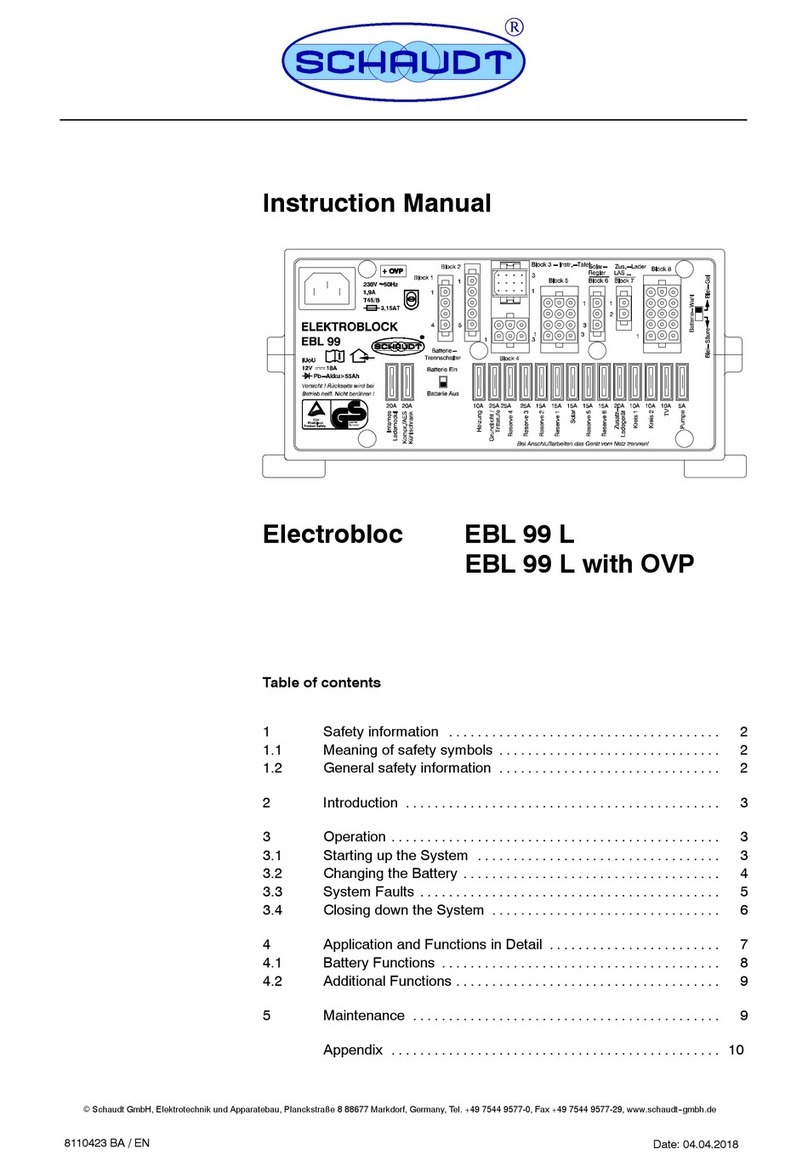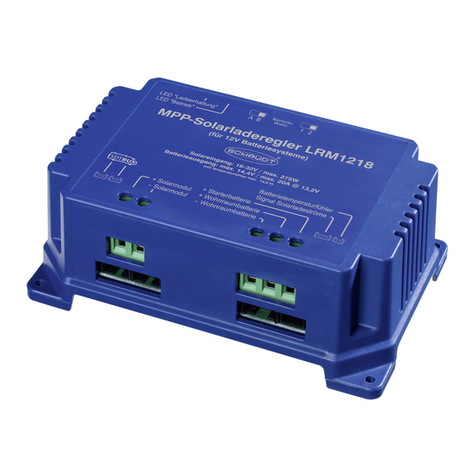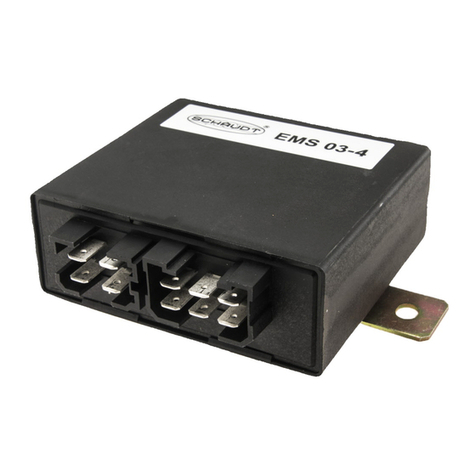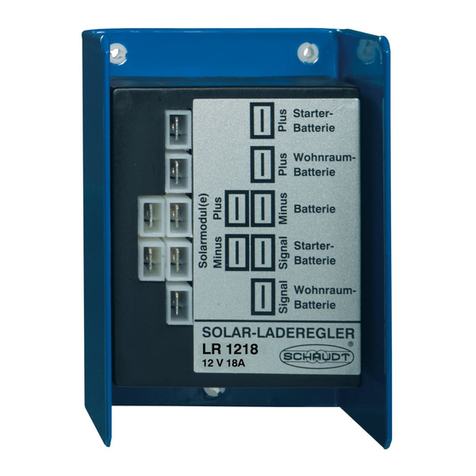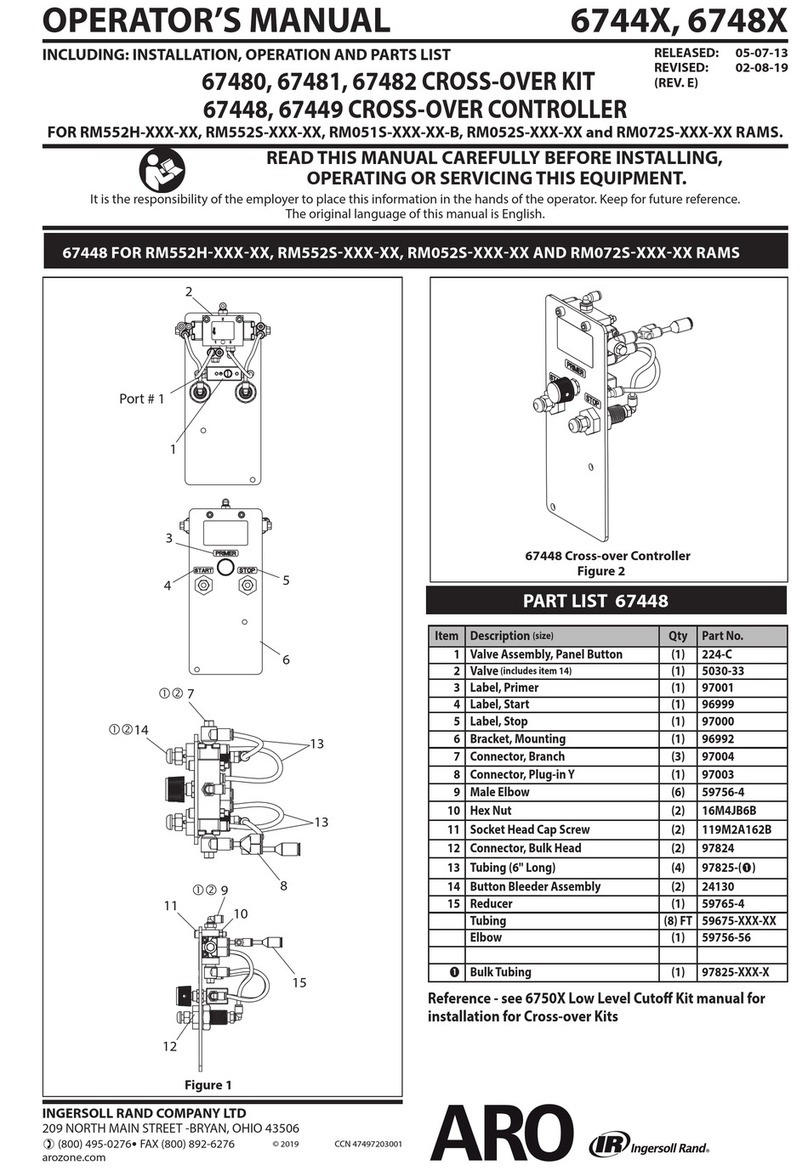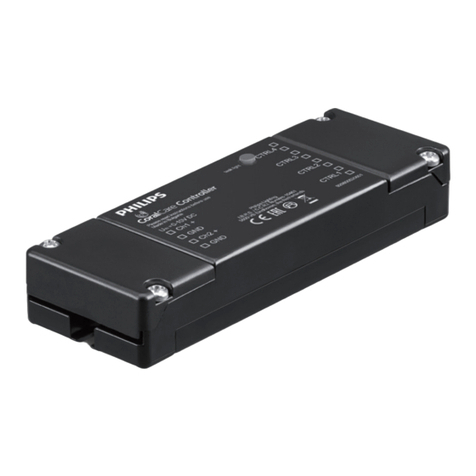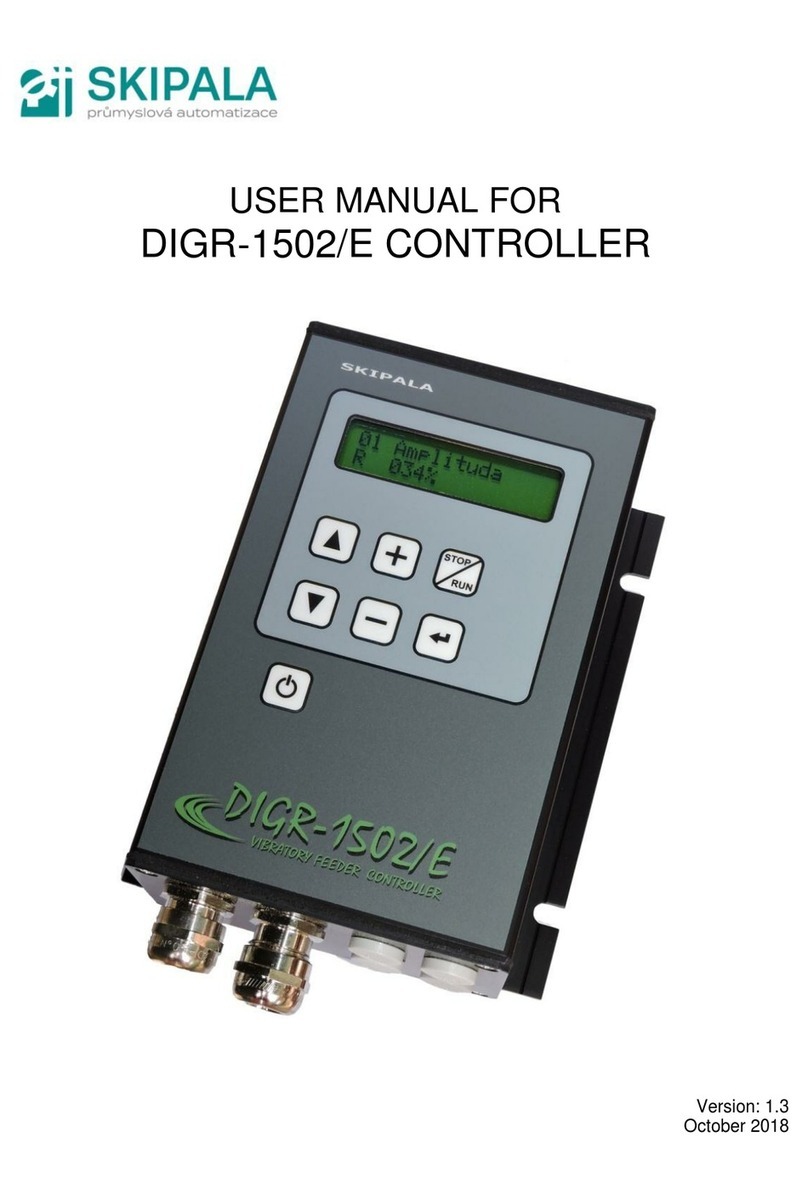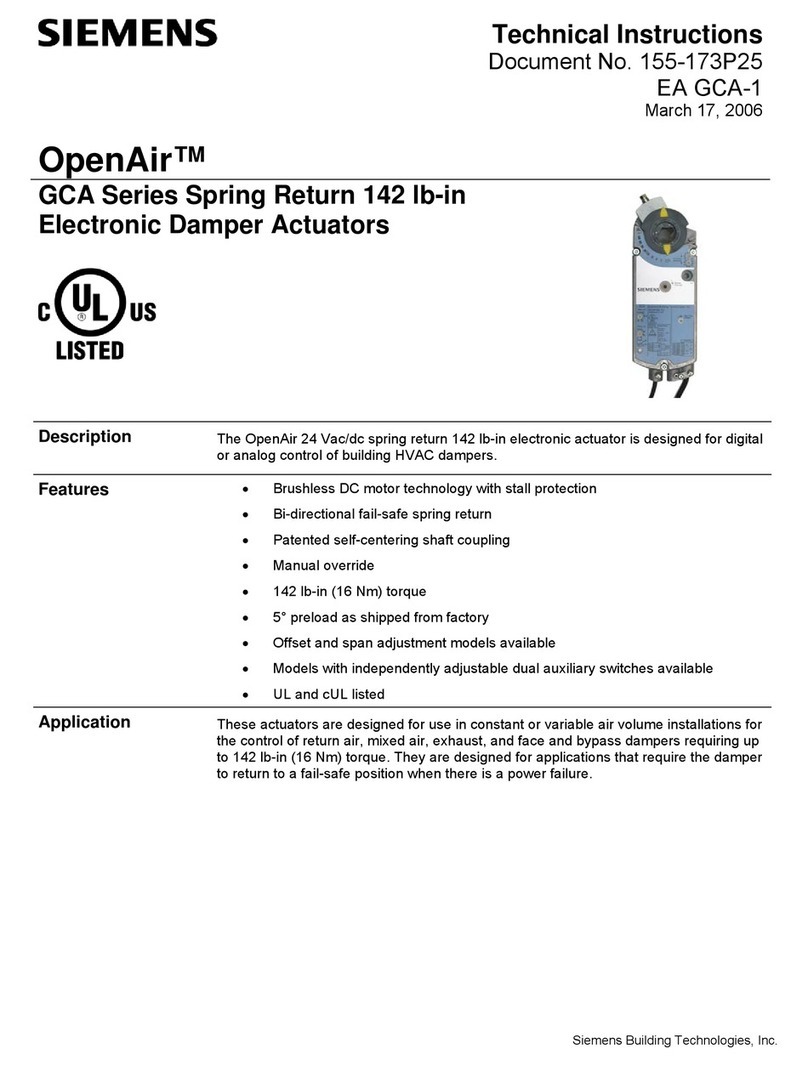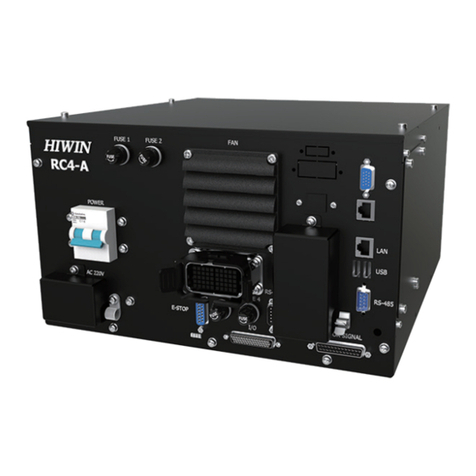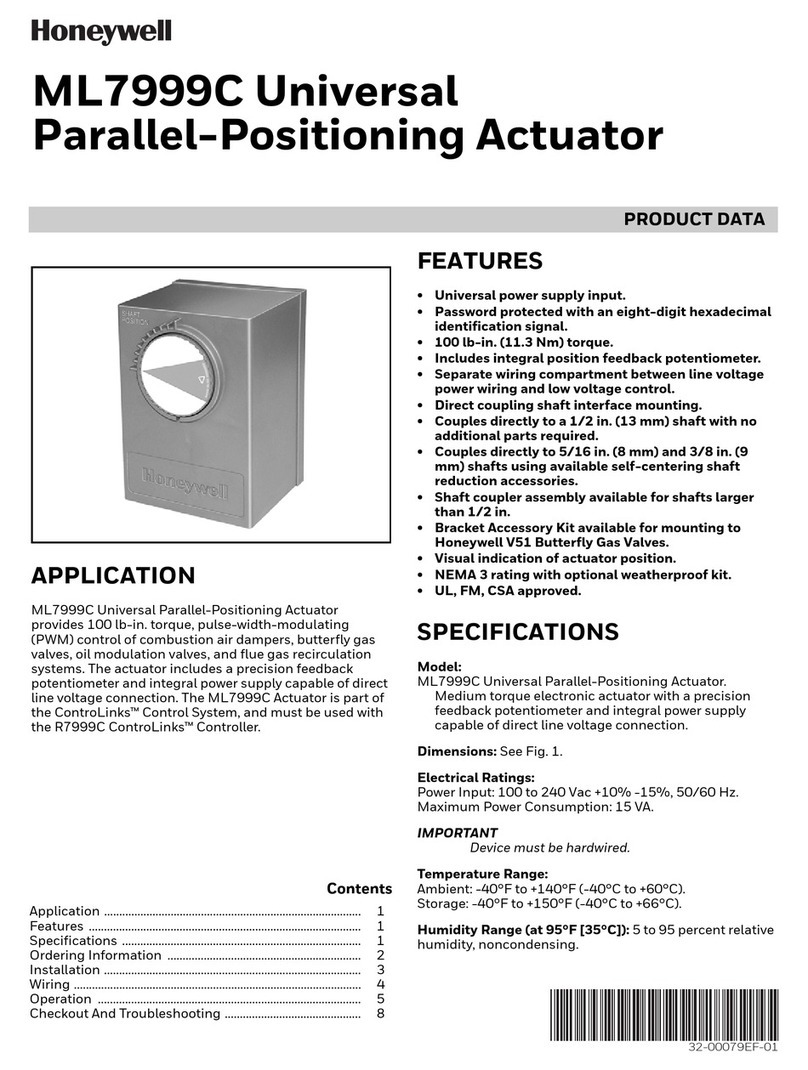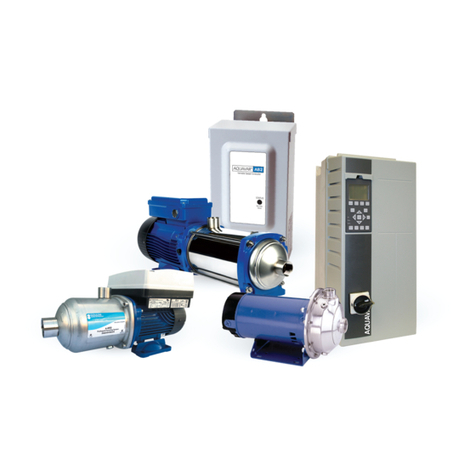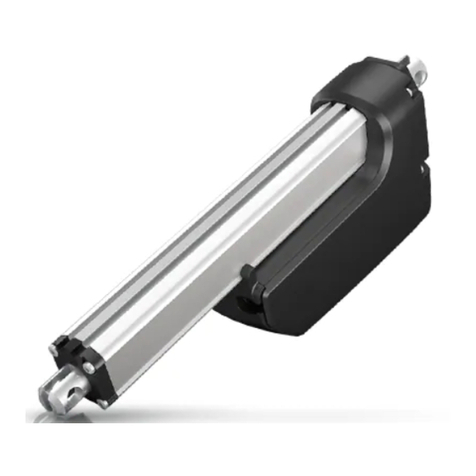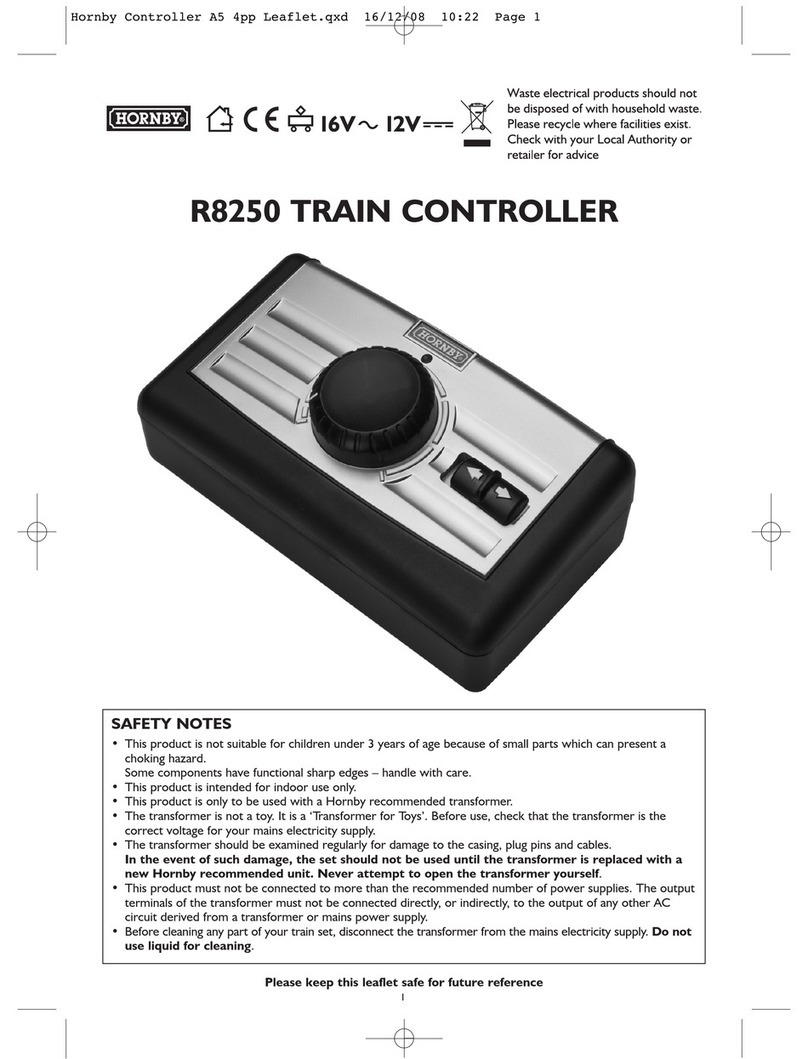Schaudt SLRM 1218 User manual

Date: 22.07.2015
ESchaudt GmbH, Elektrotechnik und Apparatebau, Planckstraße 8, 88677 Markdorf, Germany, Tel. +49 7544 9577-0, Fax +49 7544 9577-29, www.schaudt--gmbh.de
822.0213 BA / EN
Installation Instructions
LRM 1218 Solar Charge Regulator
Table of contents
1 Safety information 2......................................
1.1 Meaning of safety symbols 2...............................
1.2 General safety information 2...............................
2 Introduction 3............................................
3 Deliverables 3............................................
4 Mechanical installation 4...................................
5 Electrical connection 5....................................
5.1 Connections to leisure area battery and starter battery 6.......
5.2 Connection to an EBL ... electroblock with connected
DT ... / LT ... control and display panel 8.....................
5.3 Connection to an EBL ... electroblock with 3-pin
MNL connector and adapter for starter battery 10..............
5.4 Connection to an EBL ... electroblock with SDTBUS 13.........
5.5 Block diagram/wiring diagram 14............................
6 Initial use 14..............................................
6.1 Checks prior to initial use 14................................
7 Technical details 15........................................
7.1 Mechanical details 15......................................
7.2 Electrical details 15........................................
7.3 Environmental parameters 15...............................
8 Storage, packaging and transportation 15.....................

Installation instructions for solar charge regulator LRM 1218
2Date: 22.07.2015 822.0213 MA / EN
1 Safety information
1.1 Meaning of the safety symbols
YDANGER!
Failure to comply with this sign may result in danger to life or physical con-
dition.
YWARNING!
Failure to comply with this sign may result in injury.
YATTENTION!
Failure to comply with the sign may result in damage to equipment or other
connected loads.
1.2 General safety instructions
YWARNING!
Hot components
Burns:
FBlown fuses may only be changed after the power to the system has
been disconnected.
FBlown fuses may only be replaced once the cause of the fault is
known and has been rectified.
FThe back of the device can get hot during operation. Do not touch it.
YATTENTION!
Voltage carrying parts
Damage to devices:
FThe motorhome or caravan’s electrical system must comply with DIN,
VDE and ISO regulations.
FDo not try to modify the device.
FNever try to start the device using a defective mains cable or with a
faulty connection.
FNever undertake maintenance on the device when it is live.
FEnsure proper electrical connections are made.
FEnsure correct electrical fuses are used.

Installation instructions for solar charge regulator LRM 1218
3
Date: 22.07.2015
822.0213 MA / EN
2 Introduction
These installation instructions are aimed at trained personnel.
They contain important information on the connection and safe operation of
the device. The safety information provided must be observed.
Always follow the relevant instruction manual in addition to the installation
instructions.
3 Deliverables
Delivered as part of the LRM 1218 solar charge regulator:
F1 x LRM 1218 solar charge regulator
FConnector set (small parts and connector cables) for the different
applications
FOperating instructions
FInstallation instructions
1
2
3 4 5
76
Fig. 1 Small parts and accessories delivered with the LRM 1218 solar charge regulator
Pos. Qty Name
1 2 Flat vehicle fuse, 20A
2 1 Flat vehicle fuse, 15 A
3 2 Fuse holder for flat vehicle fuse
4 5 Flat push--on contacts, 6.3 x 0.8 without sleeve
5 2 Screws, 3.5 x 20
6 6 Flat push--on contacts, 6.3 x 0.8 (blue)
7 4 Insulating sleeves for pos. 4

Installation instructions for solar charge regulator LRM 1218
4Date: 22.07.2015 822.0213 MA / EN
1
2
3
1
2
3
2
31
4
Fig. 2 Connector cables delivered with the LRM 1218 solar charge regulator
Pos. Qty Name
1 1 EBL ... connector cable (signals for display charge cur-
rents on DT ... / LT ...)
2 1 EBL ... connector cable (batteries for charge currents)
3 1 EBL ... adapter cable (charge current for starter battery)
for EBLs without direct starter battery solar charge cur-
rent input
4 1 SDTBUS connector cable
YNot all parts/cables are required for every different application.
4 Mechanical installation
YThis device is intended for installation into a vehicle.
"For applications in which the cables provided are used to connect to an
EBL ... electroblock from Schaudt (as in Sections 5.2 and 5.3), the solar
charge regulator must be installed in the direct vicinity of the electroblock
(max. distance to front plate 30 cm).
"For other applications, a dry and sufficiently ventilated place in the insula-
ted interior is to be selected for installation. No condensation is allowed to
form on the device. To prevent a build-up of heat, ventilation holes facing
the living area must be provided in the upper and lower areas of the
place of installation. Its cross-section is based on the size and average
temperature of the place of installation.
Environment

Installation instructions for solar charge regulator LRM 1218
5
Date: 22.07.2015
822.0213 MA / EN
"Ensure a minimum clearance to the surrounding fixtures and fittings:
FMaintain a gap of at least 5 cm on all sides (except mounted side).
FWhilst in operation, the ambient temperature must not exceed +45 C,
measured 2.5 cm away from the sides of the device.
"On a stable and even surface, attach the solar charge regulator to the
drillholes with two screws (Fig. 1, Pos. 5).
3
130.7
90
119
60
ø4 (2x)
Fig. 3 Attachment points for LRM 1218 solar charge regulator (dimensions in mm)
5 Electrical connection
YATTENTION!
The output voltage of the charge regulator is also suitable for direct supply
without battery. The solar charge regulator must be set accordingly for
this however.
The electrical connection of the solar charge regulator is ready for the follo-
wing applications:
FConnections to leisure area battery and starter battery
FConnection to an EBL ... electroblock with connected DT ... / LT ...
control and display panel
FConnection to an EBL ... electroblock with 3-pin MNL connection and
adapter for starter battery
FConnection to 3-pin MNL connector and adapter for starter battery
and SDTBUS connector (bus systems)
Minimum clearance
Fitting

Installation instructions for solar charge regulator LRM 1218
6Date: 22.07.2015 822.0213 MA / EN
5.1 Connections to leisure area battery and starter battery
YATTENTION!
Short circuits!
Damage to the solar charge regulator or fire damage to cable:
FTo protect the supply lines in the event of a short circuit, connect the
fuses directly to the positive pole of battery.
Select cable cross-sections in line with EN 1648-1/-2. The maximum current
load must not exceed 90% of the individual fuse rating.
Recommended cable cross-sections:
Line length
(sum of supply and return lines)
Cable cross-section
Upto4m 2,5 mm2
Upto8m 4,0 mm2
Up to 12 m 6,0 mm2
For this application, the follow parts are required from those delivered:
Fig./Pos. Qty Name
-- 1LRM 1218 solar charge regulator
1/2 2Flat vehicle fuse, 20A
1/3 2Fuse holder for flat vehicle fuse
1/4 4Flat push--on contacts, 6.3 x 0.8 without sleeve
1/7 5Insulating sleeve for Pos. 1/4
-- 5Wire end sleeves (not included in delivery)
+--
+--
F1
F2 G1
G2
G3
--
--+
LRM 1218
3
LT 320*
TF 50 A*
Fig. 4 Circuit diagram for LRM 1218 to starter battery and leisure area battery connectors
* Optional

Installation instructions for solar charge regulator LRM 1218
7
Date: 22.07.2015
822.0213 MA / EN
Pos. Name
F1 Fuse for starter battery charge current (20A)
F2 Fuse for leisure area battery charge current (20A)
G1 Starter battery
G2 Leisure battery
G3 Solar module(s)
LRM 1218 Solar charge regulator
LT320* Control panel solar charge currents (optional special configura-
tion; cable delivered with the panel)
TF 50 A* Temperature sensor (special configuration, see also Section
5.5)
Establish the connection on the side of the solar charge regulator in the fol-
lowing order:
"1. Connect the two fuse holders with fuses to the connection cable in ac-
cordance with the circuit diagram in Fig. 4. Use the flat push--on con-
tacts (6.3 x 0.8) without sleeve for this (Fig. 1, Pos. 5). After crimping,
attach the insulating sleeves (Fig. 1, Pos. 7). Insert the two fuses.
"2. First connect the connection cables for living area battery and starter
battery to the solar charge regulator, observing the polarity of the con-
nections. Use wire end sleeves for this (not included in the delivery).
"3. Connect the cables for leisure area battery and starter battery to the
batteries.
"4. Finally, connect solar modules to the solar charge regulator. Use wire
end sleeves for this (not included in the delivery).
YSteps 5. ... 9. ONLY when a TF 50 A temperature sensor is fitted (optio-
nal):
"5 Clamp the TF 50 A battery sensor to one of the terminals (preferable
the negative terminal) of the leisure area battery (note: this is NOT an
electrical connection -- only the temperature of the battery terminal is
read with this mechanical connection; this is virtually identical to the
internal temperature of the battery)
"6. Guide the cable through the vehicle to the LRM 1218 solar charge
regulator.
"7. Plug the TF 50 A battery sensor connector into the LRM 1218 solar
charge regulator.
"8. Secure the battery sensor cable at a suitable place (particularly near
the connector on the LRM 1218 to prevent the 2-pin connector from
coming loose).
"9. Unplug the ”Solar modules” and ”Leisure area and starter batteries”
connectors from the LRM 1218 and plug them back in again after 30
seconds. This ”registers” the sensor.
Disconnect in the reverse order.
Connection sequence
Disconnection

Installation instructions for solar charge regulator LRM 1218
8Date: 22.07.2015 822.0213 MA / EN
5.2 Connection to an EBL ... electroblock with connected
DT ... / LT ... control and display panel
For this application, the follow parts are required from those delivered:
Fig./Pos. Qty Name
1 1 LRM 1218 solar charge regulator
1/1 or 2 120A or 15A flat vehicle fuse (depending on EBL ...)
2/1 1EBL ... connector cable (signals for display charge
currents on DT ... / LT ...)
2/2 1EBL ... connector cable (batteries for charge cur-
rents)
-- 2Wire end sleeves (not included in delivery)
G3
+
--
--+
LRM 1218
3
Red
Black
Brown
White
Brown
EBL ...
on block
”Solar charge
EBL ...
on block
”Solar charge
X
Y
TF 50 A*
regulator”
regulator”
Fig. 5 Circuit diagram for LRM 1218 connection to EBLs with solar regulator connector
and connector for current display (* optional)

Installation instructions for solar charge regulator LRM 1218
9
Date: 22.07.2015
822.0213 MA / EN
Pos. Name
XCable with electroblock connector:
-- X1 Brown Negative battery
-- X2 Red + Starter battery
-- X3 Black + Leisure area battery
YCable with DT .../LT ... control and display panel connector
-- Y1 Brown Leisure area battery signal
-- Y2 White Starter battery signal
G3 Solar module(s)
LRM 1218 Solar charge regulator
TF 50 A* Temperature sensor (special configuration, see also Section
5.5)
Establish the connection on the front of the solar charge regulator in the fol-
lowing order:
"1. Connect the electroblock with cable X (connection cable EBL ...
(charge currents for batteries), Fig. 2, Pos. 2).
"2. Connect the electroblock with cable Y (signals for display of charge
currents on DT ... / LT ..., Fig. 2, Pos. 1).
"3. Fit the right flat vehicle fuse (15A or 20 A; Fig. 1, Pos. 1 or 2) into the
”Solar” fuse on the EBL ...
"4. Finally, connect solar modules to the solar charge regulator. Use wire
end sleeves for this.
YThe correct fuse rating is printed on the front plate of the EBL... electro-
block. See also the block diagram in the operating instructions for the
electroblock.
YSteps 5. ... 9. ONLY when a TF 50 A temperature sensor is fitted (optio-
nal):
"5 Clamp the TF 50 A battery sensor to one of the terminals (preferable
the negative terminal) of the leisure area battery (note: this is NOT an
electrical connection -- only the temperature of the battery terminal is
read with this mechanical connection; this is virtually identical to the
internal temperature of the battery)
"6. Guide the cable through the vehicle to the LRM 1218 solar charge
regulator
"7. Plug the TF 50 A battery sensor connector into the LRM 1218 solar
charge regulator
"8. Secure the battery sensor cable at a suitable place (particularly near
the connector on the LRM 1218 to prevent the 2-pin connector from
coming loose)
"9. Unplug the ”Solar modules” and ”Leisure area and starter batteries”
connectors from the LRM 1218 and plug them back in again after 30
seconds. This ”registers” the sensor.
Disconnect in the reverse order.
Connection sequence
Disconnection

Installation instructions for solar charge regulator LRM 1218
10 Date: 22.07.2015 822.0213 MA / EN
5.3 Connection to an EBL ... electroblock with 3--pin MNL con-
nection and adapter for starter battery
When using an electroblock which only has a 3--pin connection for a solar
charge regulator, an adapter for charging the starter battery can be retrofit-
ted. It is then possible to charge the leisure area and starter batteries simul-
taneously.
The following electroblocks (as of April 2008) can be used with the adapter:
FEBL 99
FEBL 100
FEBL 264-9
FEBL 240
FEBL 269
An LT 320 operating and display panel, for the display of solar charge cur-
rents, can be used as an optional accessory.
For this application, the follow parts are required from those delivered:
Fig./Pos. Qty Name
1 1 LRM 1218 solar charge regulator
1/1 or 2 120A or 15A flat vehicle fuse (depending on EBL ...)
2/2 1EBL ... connector cable (leisure area battery charge
current). Here the middle wire on the connector
must be detached and the red cable be pulled from
the insulating sleeve.
2/3 1EBL ... connector cable (starter battery charge cur-
rents) is looped in between cable loom and EBL
-- 2Wire end sleeves (not included in delivery)

Installation instructions for solar charge regulator LRM 1218
11
Date: 22.07.2015
822.0213 MA / EN
G3
+
--
--+
LRM 1218
3
Black
Brown
EBL ...
on block
”Solar charge
X
Ya Yb
2xRed
EBL ...
on block
Cable loom
LT 320*
Black
Brown
Yellow
Brown
Red Red
TF 50 A*
regulator”
Fig. 6 Circuit diagram for LRM 1218 connection to EBL ...
Pos. Name
XCable with electroblock connector:
-- X1 Brown Negative battery
-- X2 -- Not assigned (detach red cable on connector
and remove from insulation sleeve)
-- X3 Black + Leisure area battery
YElectroblock adapter cable
-- Ya To available electroblock cable
-- Yb To electroblock
-- Y1 Red + Starter battery
-- Y2 Brown Negative sensor, leisure area battery
-- Y3 yellow D+ input
-- Y4 Brown Negative starter battery for refrigerator
-- Y5 Black + Leisure area battery sensor
G3 Solar module(s)
LRM 1218 Solar charge regulator
LT320* Control panel solar charge currents (optional special configu-
ration; cable delivered with the panel)
TF 50 A* Temperature sensor (special configuration, see also Section
5.5)

Installation instructions for solar charge regulator LRM 1218
12 Date: 22.07.2015 822.0213 MA / EN
Establish the connection on the front of the solar charge regulator in the fol-
lowing order:
"1. On the electroblock, disconnect the vehicle--side 5-pin cable carrying
the starter battery supply.
"2. Connect the electroblock with cable Y (adapter cable EBL ... (starter
battery charge current), Fig. 1, Pos. 3):
FYa to the vehicle--side cable
FConnect Yb on the electroblock
"3. On cable X (Fig. 1 Pos. 2), detach the red cable on the connector
housing and pull the cable from the insulating sleeve. It is no longer
required.
"4 Connect the electroblock with cable X (connection cable EBL ...
(now only for caravan battery charge current, Fig. 1, Pos. 2).
"5. Fit the right flat vehicle fuse (15A or 20 A; Fig. 1, Pos. 2 or 3) into the
”Solar” fuse on the EBL ...
YThe correct fuse rating is printed on the front plate of the EBL... electro-
block. See also the block diagram in the operating instructions for the
electroblock.
"6. Finally, connect solar modules to the solar charge regulator. Use wire
end sleeves for this.
YThe correct fuse rating is printed on the front plate of the EBL... electro-
block. See also the block diagram in the operating instructions for the
electroblock.
YSteps 7. ... 11. ONLY when a TF 50 A temperature sensor is fitted (optio-
nal):
"7 Clamp the TF 50 A battery sensor to one of the terminals (preferable
the negative terminal) of the leisure area battery (note: this is NOT an
electrical connection -- only the temperature of the battery terminal is
read with this mechanical connection; this is virtually identical to the
internal temperature of the battery)
"8. Guide the cable through the vehicle to the LRM 1218 solar charge
regulator
"9. Plug the TF 50 A battery sensor connector into the LRM 1218 solar
charge regulator.
"10.Secure the battery sensor cable at a suitable place (particularly near
the connector on the LRM 1218 to prevent the 2-pin connector from
coming loose).
"11.Unplug the ”Solar modules” and ”Leisure area and starter batteries”
connectors from the LRM 1218 and plug them back in again after 30
seconds. This ”registers” the sensor.
Disconnect in the reverse order.
Connection sequence
Disconnection

Installation instructions for solar charge regulator LRM 1218
13
Date: 22.07.2015
822.0213 MA / EN
5.4 Connection to an EBL ... electroblock with SDTBUS
For this application, the follow parts are required from those delivered:
Fig./Pos. Qty Name
1 1 LRM 1218 solar charge regulator
1/1 or 2 120A or 15A flat vehicle fuse (depending on EBL ...)
2/2 1EBL ... connector cable (batteries for charge currents)
2/4 1SDTBUS connector cable
-- 2Wire end sleeves (not included in delivery)
G3
+
--
--+
LRM 1218
3
TF 50 A*
Red
Black
Brown
White
Brown
EBL ...
on block
”Solar charge
EBL ... on block ”SDTBUS”
X
Y
1
2
3
2
3
1
regulator”
Fig. 7 Circuit diagram for LRM 1218 connection to EBLs with SDTBUS
Pos. Name
XCable with electroblock connector:
-- X1 Brown Negative battery
-- X2 Red + Starter battery
-- X3 Black + Leisure area battery
YSDTBUS to electroblock connector cable
G3 Solar module(s)
LRM 1218 Solar charge regulator
TF 50 A* Temperature sensor (special configuration, see also Section 5.5)

Installation instructions for solar charge regulator LRM 1218
14 Date: 22.07.2015 822.0213 MA / EN
Establish the connection on the front of the solar charge regulator in the
following order:
"1. Connect the electroblock with cable X (connection cable EBL ...
(charge currents for batteries), Fig. 2, Pos. 2).
"2. Connect the electroblock with cable Y (SDTBUS, Fig. 2, Pos. 4).
"3. Fit the right flat vehicle fuse (15A or 20 A; Fig. 1, Pos. 1 or 2) into the
”Solar” fuse on the EBL ...
"4. Finally, connect solar modules to the solar charge regulator. Use wire
end sleeves for this.
YThe correct fuse rating is printed on the front plate of the EBL... electro-
block. See also the block diagram in the operating instructions for the
electroblock.
YSteps 5. ... 9. ONLY when a TF 50 A temperature sensor is fitted (optio-
nal):
"5 Clamp the TF 50 A battery sensor to one of the terminals (preferable
the negative terminal) of the leisure area battery (note: this is NOT an
electrical connection -- only the temperature of the battery terminal is
read with this mechanical connection; this is virtually identical to the
internal temperature of the battery).
"6. Guide the cable through the vehicle to the LRM 1218 solar charge
regulator.
"7. Plug the TF 50 A battery sensor connector into the LRM 1218 solar
charge regulator.
"8. Secure the battery sensor cable at a suitable place (particularly near
the connector on the LRM 1218 to prevent the 2-pin connector from
coming loose).
"9. Unplug the ”Solar modules” and ”Leisure area and starter batteries”
connectors from the LRM 1218 and plug them back in again after 30
seconds. This ”registers” the sensor.
Disconnect in the reverse order.
5.5 TF 50 A battery temperature sensor (optional)
The optional TF 50 A battery temperature sensor is used to implement bat-
tery temperature--controlled charging. The LRM 1218 solar regulator must
be fully isolated from the power for the sensor to be detected (unplug the
connectors for solar modules and batteries, and plug them in again after 30
seconds).
A battery temperature sensor can also be ”deregistered” by first unplugging
the connectors for solar modules and batteries on the LRM 1218, and then
disconnecting the temperature sensor.
Once the connectors for solar modules and batteries are plugged in again,
the sensor is ”deregistered” and no faults are displayed (bus system).
6 Block diagram/wiring diagram
YThe block diagram and connection diagram are appended to the instruc-
tion manual of the solar charge regulator.
Connection sequence
Disconnection

Installation instructions for solar charge regulator LRM 1218
15
Date: 22.07.2015
822.0213 MA / EN
7 Initial use
7.1 Checks prior to initial use
"Ensure that all the connections are correct (only for initial use).
"Ensure that the batteries or the electroblock are connected (depending
on operating mode).
"Connect the solar module to the solar charge regulator with the correct
polarity. The solar charge regulator is ready to use.
8 Technical details
8.1 Mechanical details
135x48x90(WxHxDinmm)
360 g
Blue plastic (RAL 5010)
8.2 Electrical details
12 V
MPP regulator (Maximum Point Tracking)
Dependent on setting, see operating instructions table
See operating instructions
For shaded solar module:
Approx. 4 mA from leisure area battery
Approx. 0.5 mA from starter battery
6-cell lead acid or lead gel batteries, rated 55 Ah or higher
FAt least 36--cell modules
FOpen circuit voltage 20 ... 32 V
FMaximum overall capacity of solar modules 275 Wp
8.3 Environmental parameters
-10 Cto+50C
-20 Cto+70C
Operation in dry environment only
CE marked
9 Storage, packaging and transportation
Only transport and store the solar charge regulator if the packing is suitable
and ambient conditions are dry.
Before starting up
Starting up the system
Dimensions
Weight
Casing
Nominal voltage
Regulating principle
Final charge voltage
Charge current
Solar charge regulator
consumption
Suitable batteries
Suitable solar modules
Operating temperature
Storage temperature
Humidity
CE

Installation instructions for solar charge regulator LRM 1218
16 Date: 22.07.2015 822.0213 MA / EN
No part of this manual may be reproduced, translated or copied without ex-
press written permission.
E
Table of contents
Other Schaudt Controllers manuals
Popular Controllers manuals by other brands

ATA
ATA SA-7 Series instructions
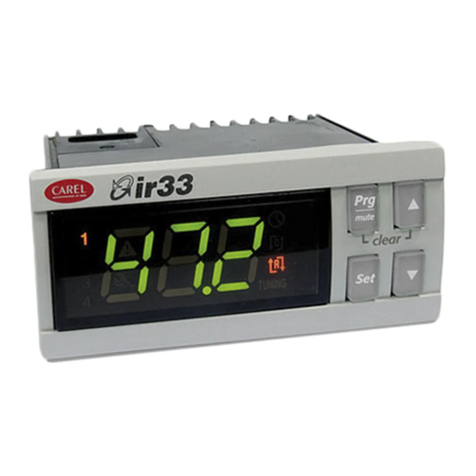
Carel
Carel ir33 smart Application guide
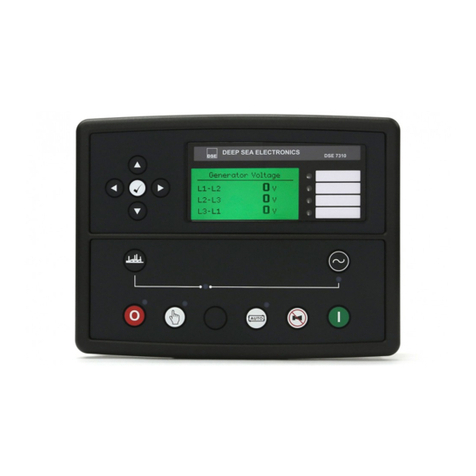
Deep Sea Electronics Plc
Deep Sea Electronics Plc DSE7310 MKII Installation instructions and operators manual
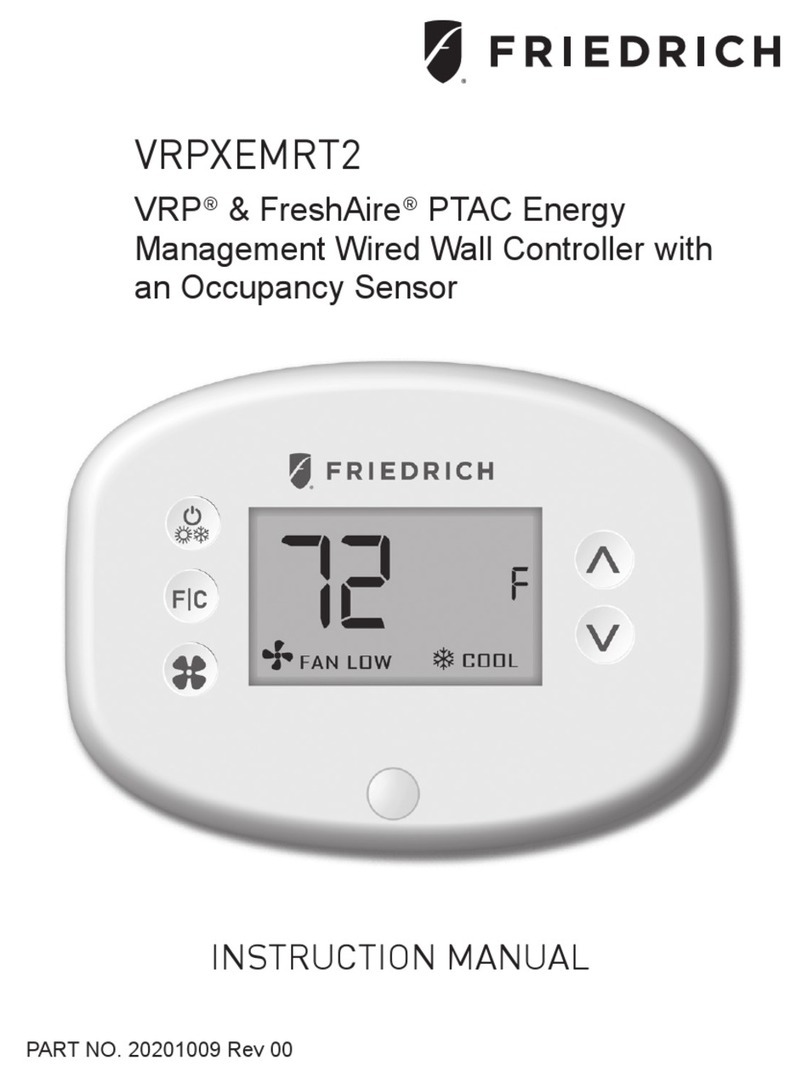
Friedrich
Friedrich VRPXEMRT2 instruction manual
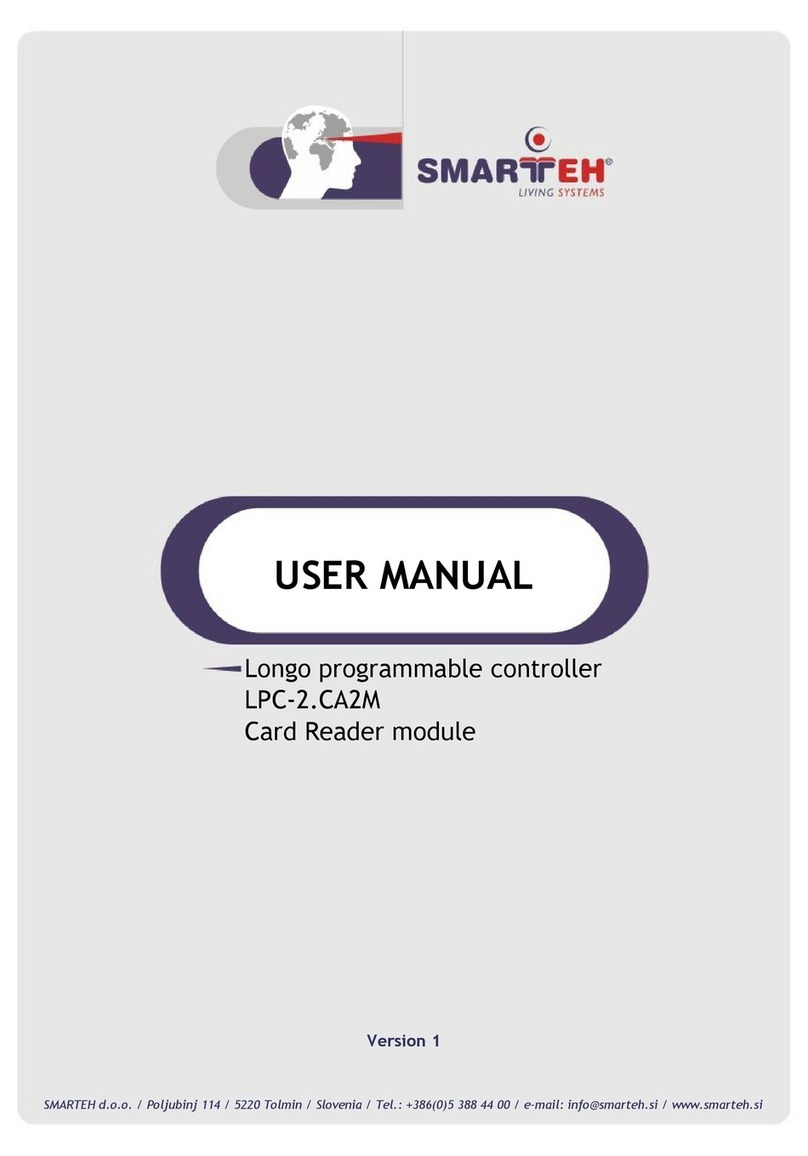
Smarteh
Smarteh LPC-2.CA2M user manual
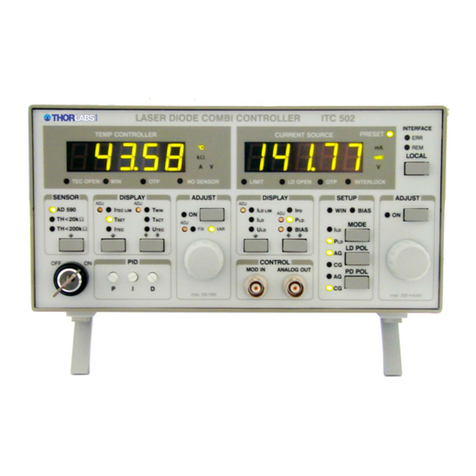
THORLABS
THORLABS ITC502 Operation manual
